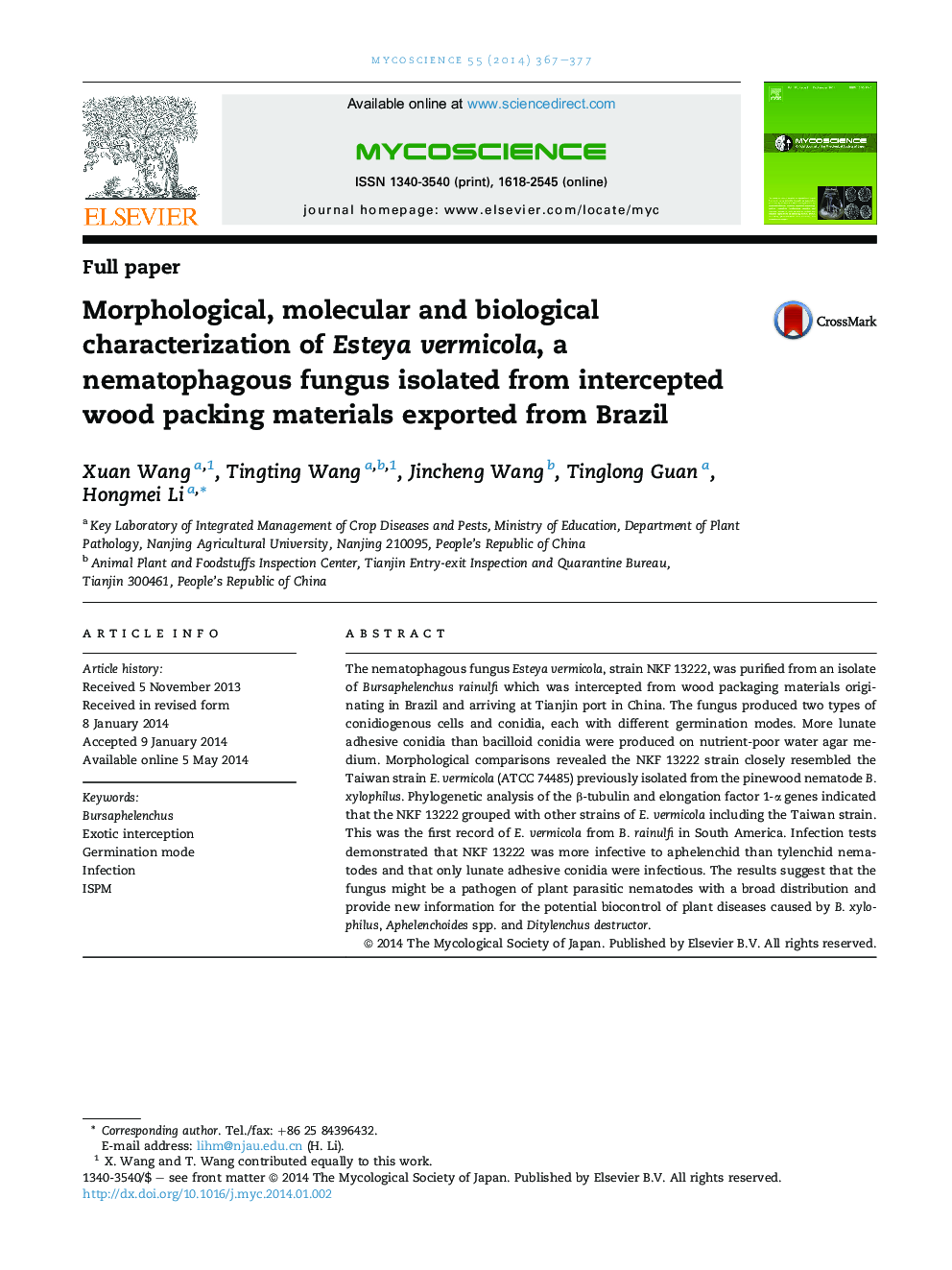| Article ID | Journal | Published Year | Pages | File Type |
|---|---|---|---|---|
| 2060248 | Mycoscience | 2014 | 11 Pages |
•South American NKF 13222 was isolated from Bursaphelenchus rainulfi intercepted from wood packing materials exported from Brazil.•NKF 13222 is different from other E. vermicola strains in germination mode of conidia.•NKF 13222 presented higher infectivity to aphelenchids than to tylenchid nematodes.
The nematophagous fungus Esteya vermicola, strain NKF 13222, was purified from an isolate of Bursaphelenchus rainulfi which was intercepted from wood packaging materials originating in Brazil and arriving at Tianjin port in China. The fungus produced two types of conidiogenous cells and conidia, each with different germination modes. More lunate adhesive conidia than bacilloid conidia were produced on nutrient-poor water agar medium. Morphological comparisons revealed the NKF 13222 strain closely resembled the Taiwan strain E. vermicola (ATCC 74485) previously isolated from the pinewood nematode B. xylophilus. Phylogenetic analysis of the β-tubulin and elongation factor 1-α genes indicated that the NKF 13222 grouped with other strains of E. vermicola including the Taiwan strain. This was the first record of E. vermicola from B. rainulfi in South America. Infection tests demonstrated that NKF 13222 was more infective to aphelenchid than tylenchid nematodes and that only lunate adhesive conidia were infectious. The results suggest that the fungus might be a pathogen of plant parasitic nematodes with a broad distribution and provide new information for the potential biocontrol of plant diseases caused by B. xylophilus, Aphelenchoides spp. and Ditylenchus destructor.
